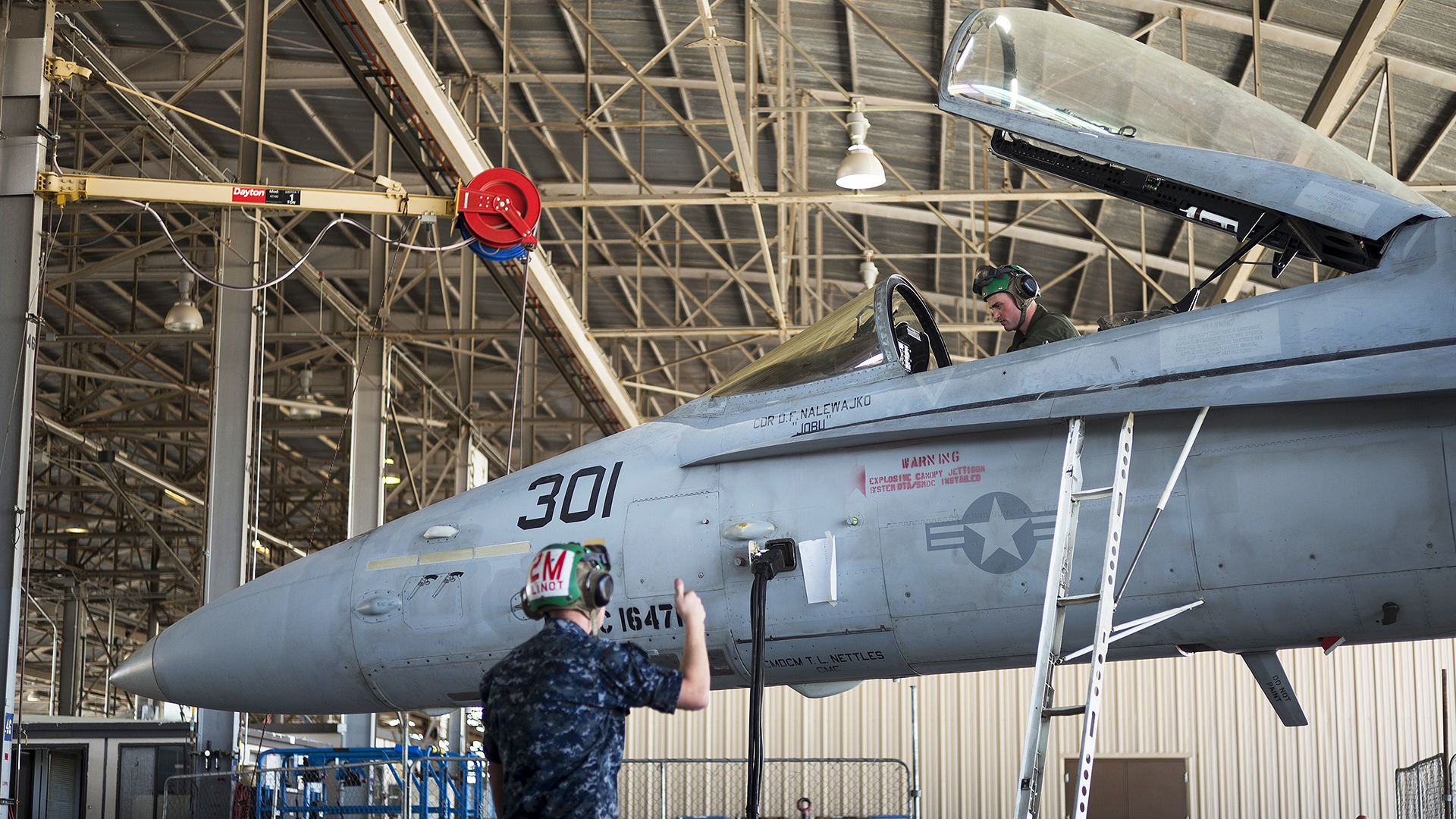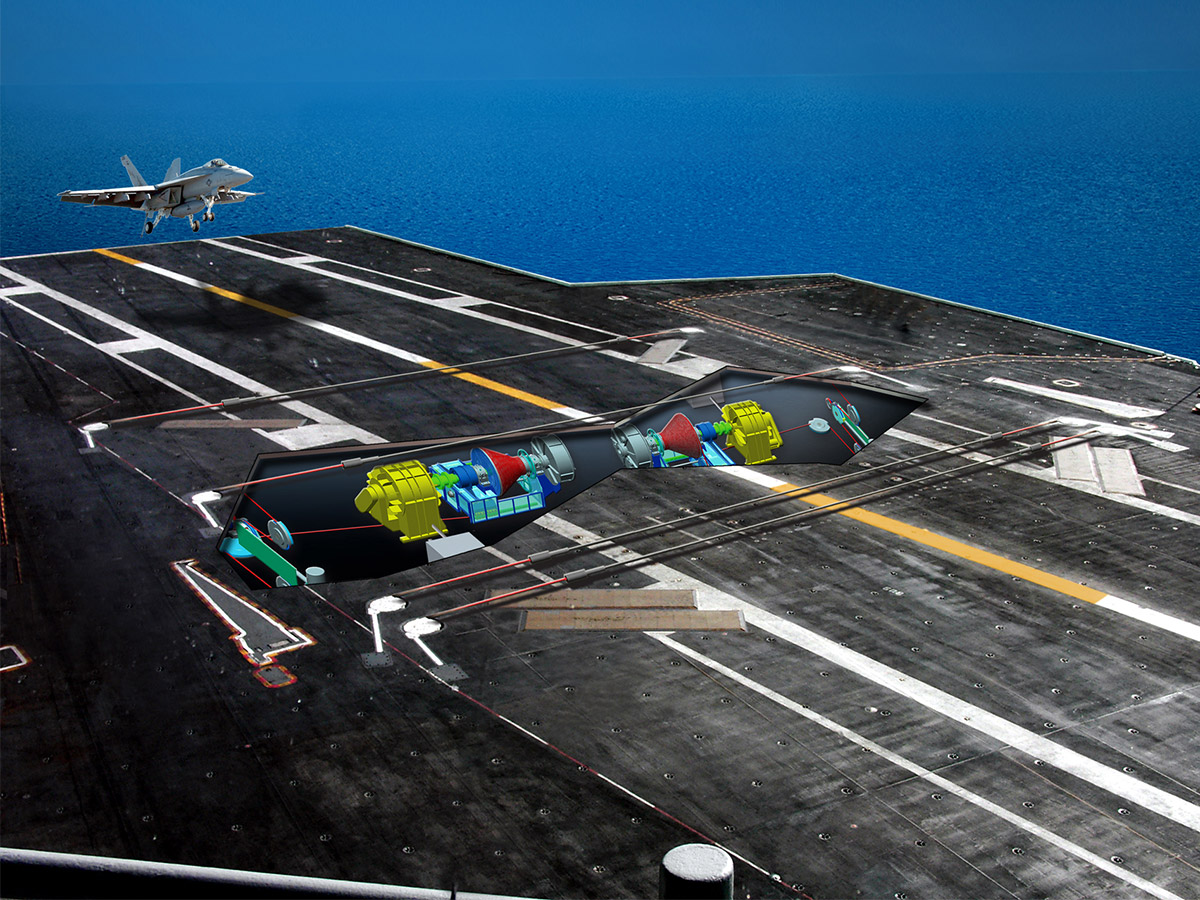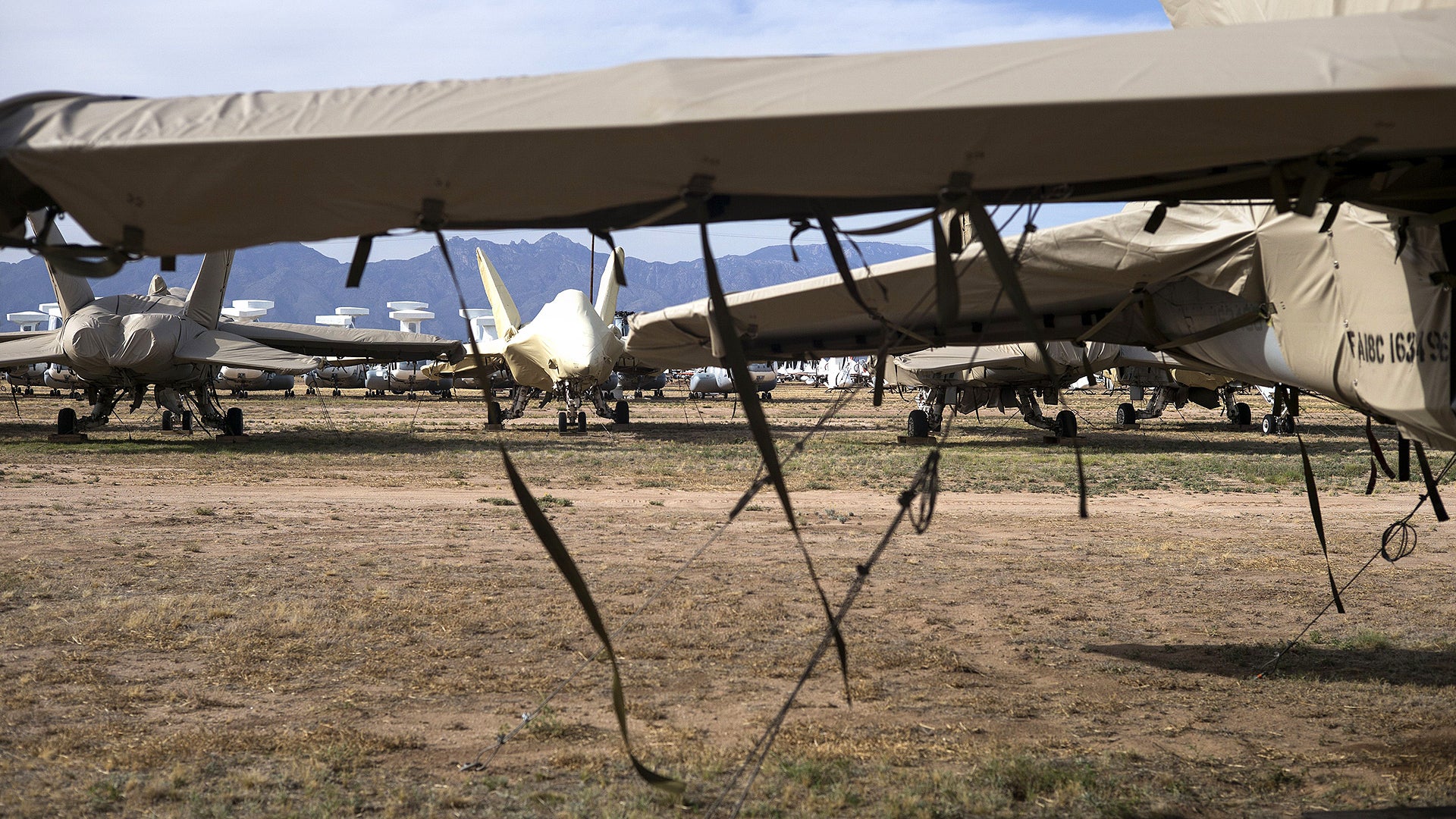In Pentagon parlance, concurrency is when you put something into production while it’s still in testing, or even before it enters testing at all. It is a high-risk sucker’s game that has proven a total loser for the DoD’s highest ticket and highest profile weapon systems. The F-35 and the Navy’s new aircraft carrier, for example, have suffered horribly under this dismal procurement concept. Now there are two new victims of concurrency, both perfect examples of how this concept has rippled through the Pentagon’s warfighting portfolio. Sadly, both were totally predictable.
The USMC is resorting to pulling retired Hornets out of boneyard and totally revamping them in order to squeeze another 2,000 hours of flight time out of the their tired airframes. We are not just talking about regenerating a couple attrition replacements here: in fact, a whopping 30 legacy Hornets will be returned to flight. In a statement to Janes, Boeing’s senior manager for F/A-18 operations said:
“The USMC wants 30 Hornet aircraft – two full squadrons – recovered from the boneyard and ‘reconstituted’ for fleet service. These aircraft were never meant to fly again, but Boeing is bringing them to Cecil Field and extending their airframe lives from 6,000 hours to 8,000 hours, replacing all the old avionics with the latest systems, and returning them to the marines.”
This will not be a cheap affair, as the process of returning one of these jets to flyable status takes more than 18 months at the Navy’s traffic-jammed Hornet depots. These depots are already dealing with recapitalizing fleet Hornets and Super Hornet that are rife with corrosion and extending their lives from 6,000 to 10,000 hours in an attempt to fill NAVAIR’s looming fighter gap.
Also, these jets are not being regenerated as short-term airframes that can fill-in for training purposes or adversary support duty. They are being loaded with the most advanced gear found on an F/A-18C, including JHMCS, Link 16, color MFDs, and new ejection seats and other upgrades. In other words, these jets, designated F/A-18C+, are meant for front line combat units.
The size of this initiative is also telling, as it points to the reality that the USMC’s Hornet fleet, which is known to be cannibalizing itself for spare parts, is indeed in poor shape. Yet above all else it highlights the fact that the F-35s that are supposed to replace these jets are not coming online fast enough in the near term even after already being delayed for many years.
The USMC is especially impacted by the incessant delays in the F-35 program because it never procured Super Hornets like the Navy did. As such, their newest Hornet was built in the 1990s, with much of the fleet dating back far before that. Add a decade and a half of perpetual warfare, inadequate program funding to reflect this operational tempo, and the result is that Marines’ flying gear is simply worn out.

Meanwhile, the Navy’s new carrier, the first in its class USS Gerald R. Ford, is being bit by concurrency in a most critical manner, and one that was also entirely foreseeable. The ship’s Advanced Arresting Gear, which uses water turbines and an induction motor to bring aircraft to a stop on the Ford’s landing area, is untested, ridiculously expensive, years behind schedule, and of questionable reliability.
Right now, the AAG is 130% over budget, going from a 2009 estimated cost of just under $500 million to a whopping $1.4 billion in 2016, according to USNI. Not just that, but since the Ford is already built and about to be commissioned, the AAG could keep it from actually operating aircraft even after its operational date has passed.
Even more damning, the AAG system had to be redesigned and the new version that has taken two years to develop is now being installed on the carrier. The big problem is that this new system is not nearly fully tested and design changes could mean ripping it out of the Ford and replacing it with yet another version—if they can get it to work reliably. So its concurrency hell Act Two for the AAG and the USS Gerald R. Ford.

The AAG is supposed to be less cumbersome than the very proven but massive hydro-pneumatic Mk 7 arresting gear system found on America’s carriers today. Its design was paired down in recent iterations, from the USS Ronald Reagan (CVN-76) onwards, when the ships swithed to three arresting wires instead of four.
The AAG is also supposed to accommodate a wider range of aircraft weights, and features a softer “catch” than the Mk 7 system, which could theoretically save on airframe fatigue and allow lighter aircraft, like unmanned ones, to use the system. But the risk, cost and uncertainty surrounding the AAG, even after many years of development and piles of cash invested, have left the Navy looking back to the Mk 7 for its future Ford class carriers.
The second in the Ford class of carriers, the USS John F. Kennedy, is already under construction, and building of the USS Enterprise will begin in 2018, so the decision to revert back to the Mk 7 arresting gear system has to be made soon if it’s to be retrofitted back into the Ford class design for these ships. This is precisely what the Navy may decide to do so they don’t end up with multiple carriers equipped with useless arresting gear that will need to be replaced, at incredible cost, with the Mk 7. In fact, the Navy has already changed course on another major Ford class concurrent developmental controversy—omitting shock trials from the carrier’s test plan in order to save time.

Arresting gear is a critical part of a carrier’s design, which makes the Navy’s decision to just throw it into the Ford design unthinkably reckless.
A similar concurrency boondoggle is also occurring with the Navy’s new America class amphibious assault ship. It needed a major refit after being commissioned to operate the F-35, and yet its deck will not be tough enough to withstand high-tempo F-35 operations even though the ship was built specifically for that mission.
An nuclear supercarrier is the most expensive military vehicle on the planet. The Navy gets a new one only about every five years, and just 11 are mandated in service at any given time. So the Navy can’t just build “production prototypes” like it can with the F-35.
Simply put, if the AAG does not work it could render a $13 billion dollar asset useless.
Thanks concurrency and the suckers who bought into it.
Contact the author at tyler@thedrive.com

